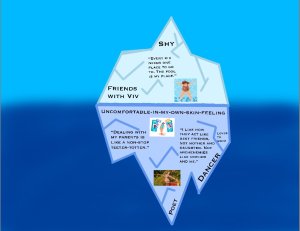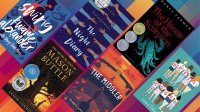Exploring Identity During Independent Reading
Middle school students build literacy skills and explore who they are growing to be in an independent reading unit centered on the theme of identity.
Your content has been saved!
Go to My Saved Content.Independent reading is a consistent aspect of my eighth-grade English class that increases reading comprehension skills, builds vocabulary, and fosters a love of reading. Throughout the year I create four theme-based independent reading units, where all students read books of their choice within a common theme.
This year, I decided to design my first independent reading unit around the theme of exploring identity. This theme connects to the social and emotional learning goals I have for my adolescent students, who are growing, changing, and discovering who they are and what they believe.
Novel Choice
Students begin the unit by choosing from a list of novels that tell the story of a character learning more about who they are and how they fit into the world.
They are also able to choose a book that’s not on my list as long as it fits the theme. Before students make their choices, I spend time doing book talks around some books on my list and encourage those who have previously read any of the books to share their informal review with their peers. Here are some of the books that my eighth graders chose to read for this unit:
- Towers Falling, by Jewell Parker Rhodes
- New Kid, by Jerry Craft
- The Truth as Told by Mason Buttle, by Leslie Connor
- Dress Coded, by Carrie Firestone
- Almost American Girl, by Robin Ha
- The House of the Scorpion, by Nancy Farmer
- Red, White, and Whole, by Rajani Larocca
- Starfish, by Lisa Fipps
- The Running Dream, by Wendelin Van Draanen
- The Deepest Breath, by Meg Grehan
- Dear Martin, by Nic Stone
- Booked, by Kwame Alexander
- Quintessence, by Jess Redman
- Maybe He Just Likes You, by Barbara Dee
- Swing, by Kwame Alexander with Mary Rand Hess
- The Middler, by Kirsty Applebaum
- The Night Diary, by Veera Hiranandani
- Here to Stay, by Sara Farizan
- Both Can Be True, by Jules Machias
- Front Desk, by Kelly Yang
During Reading Activities
While students are reading, I will periodically have them answer questions, respond to journal entries, participate in discussion prompts that encourage social and emotional learning, and explore the characters’ identities as well as their own. Here are a few sample prompts:
- What are three adjectives that you think the main character would use to describe themselves? Use evidence from the text to explain why those adjectives connect to the character. Would you use similar adjectives to describe them? What are three adjectives would you use to describe yourself? Explain why.
- What can you learn about the character based on their dialogue with others? Does the way they talk change depending on who they are talking to? If so, explain how. What might someone learn about you by listening to you talk?
- What do you think the main character’s values are? Use text to support your answer. Do you have similar or different values than the character? Explain.
- Would you want to be friends with the main character? Explain why or why not.
The Iceberg Assignment
After finishing their reads, students describe the main character of the book through a visual representation of an iceberg—either digitally or on paper—using words, quotes, and images. Above the waterline, students include the descriptors that everyone in the story knows about the character. Below the waterline, students include the character’s emotions, beliefs, fears, family dynamics, past experiences, hopes, etc. Students then present the icebergs to their classmates during a book talk to spark interest in other students to read the book without giving away any major plot points.

Then students use the same format to create an iceberg that represents themselves and their own identity. They can share these with their peers or keep them private—between themselves and me—depending on how comfortable they feel about sharing their stories.
Final Student Reflection Questions
At the conclusion of this free reading unit, students consider how the character, themselves, their friends, and everyone has things going on underneath the surface that might impact their interactions with others, their self-images, and the choices they make. Below are a few questions to encourage them to think through these ideas.
- How do you think invisible traits of the character impacted the story? How do your invisible traits impact you?
- What is a significant choice the character made? What causes them to make that decision? Would you make the same choice or a different one?
- What is one word you would use to describe how the main character feels at the beginning of the book, middle of the book, and end of the book? What events within the text impact the character’s emotions?
- If your middle school experience was a story with sixth grade being the beginning, seventh grade being the middle, and now being the end, how would you describe your own feelings during each of those times?
